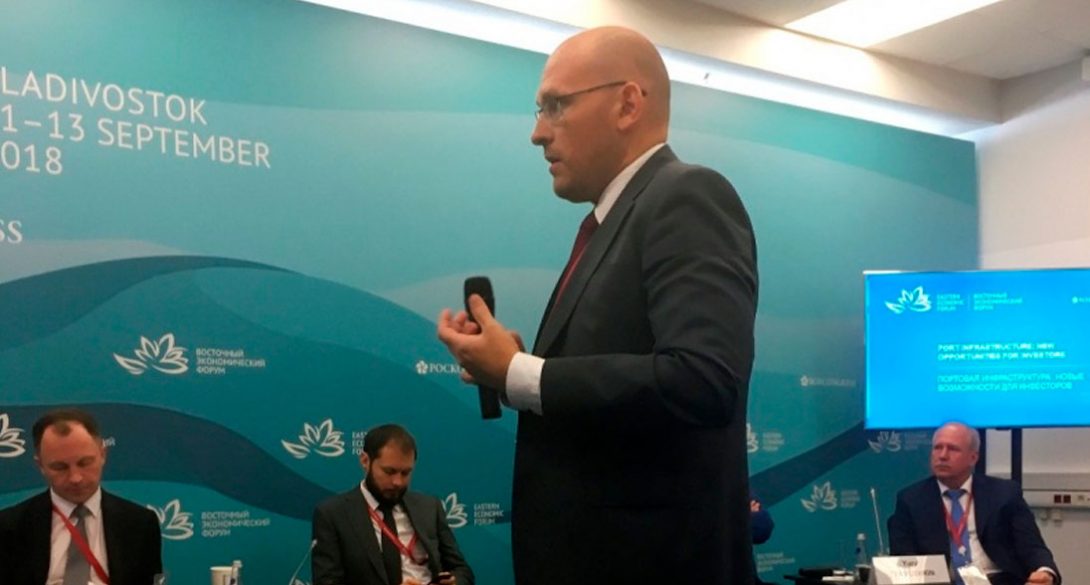Nakhodka Trade Sea Port CEO Vladimir Grigoriev Shares Port Development Outlook at 2018 Eastern Economic Forum

At the opening day of St. Petersburg International Economic Forum, Nakhodka Trade Sea Port CEO Vladimir Grigoriev participated in the Port Infrastructure: New Investor Opportunities panel discussion.
During the panel, businesses and local authorities discussed the development priorities of the Far East ports and the opportunities to make them more competitive. Event participants noted that the freight turnover of the Far East ports was growing faster than the Russian average. In 2017, it increased by 191.7 million tonnes, coal transfer being the largest contributor. We expect the development of coal deposits in the Far East and the export of coal to the Asia-Pacific will continue. Therefore, maintaining healthy balance between port development and support for the local economies became a critical issue.
In his presentation, Vladimir Grigoriev discussed how the development of Nakhodka Trade Sea Port was going to address the latest challenges for the industry.
Development of existing facilities to improve environmental safety and port efficiency remains the key priority for Nakhodka Trade Sea Port. Our most important project in the short term is the development of an indoor coal unloading facility equipped with a rotary car dumper. We have already purchased the equipment and are now developing the project documentation.
The commitment of Nakhodka Trade Sea Port to implement the most environmentally safe coal transfer technologies by 2020 was earlier made a part of the Agreement between the port and the Ministry of Transport, Russia’s Federal Environmental Supervision Service, Rosmorport and the Government of Primorsky Krai also signed during the St. Petersburg International Economic Forum.
Under this Agreement, the port shall implement a series of initiatives to protect the environment in Nakhodka.
In his speech at SPIEF 2018, Nakhodka Trade Sea Port CEO noted that the port was eager to consider further opportunities to diversify its cargo. Nakhodka Trade Sea Port has historically been a universal port. Currently metal products represent approximately 20% of the overall cargo volume at Nakhodka Trade Sea Port. The speaker emphasized that the port had enough resources and expertise to continue cargo diversification.
Vladimir Grigoriev believes that another opportunity for development and utilization of the regional transport infrastructure is the diversification of shipping geographies. Currently 90% of cargo delivered to ports in the Russian Far East is shipped overseas. Cargo import also presents a significant opportunity. Today the rail cars arrive at the port loaded but leave the port empty. Loading them with imported cargo would be a great opportunity for the port and for Russian Railways, Rosmorport, the owners of rolling stock and other participants of the cargo transfer process. The development of Primorie-1 and Primorie-2 transport corridors may also drive the share of shipments from Northern China to Southern China through Russia.
“Today coal represents 80% of our overall cargo volume, and we understand that it will remain an important type of cargo for us and our partners. I am confident that it should be transferred by ports effectively demonstrating their responsible attitude towards the environment and having all the necessary specialized technology in place. This is why we are building an indoor coal unloading station and working on a series of dust suppression initiatives. In the longer term, it is important that the state supports creating the conditions for the diversification of cargo transfer through Far Eastern ports,” said Nakhodka Trade Sea Port CEO Vladimir Grigoriev.
